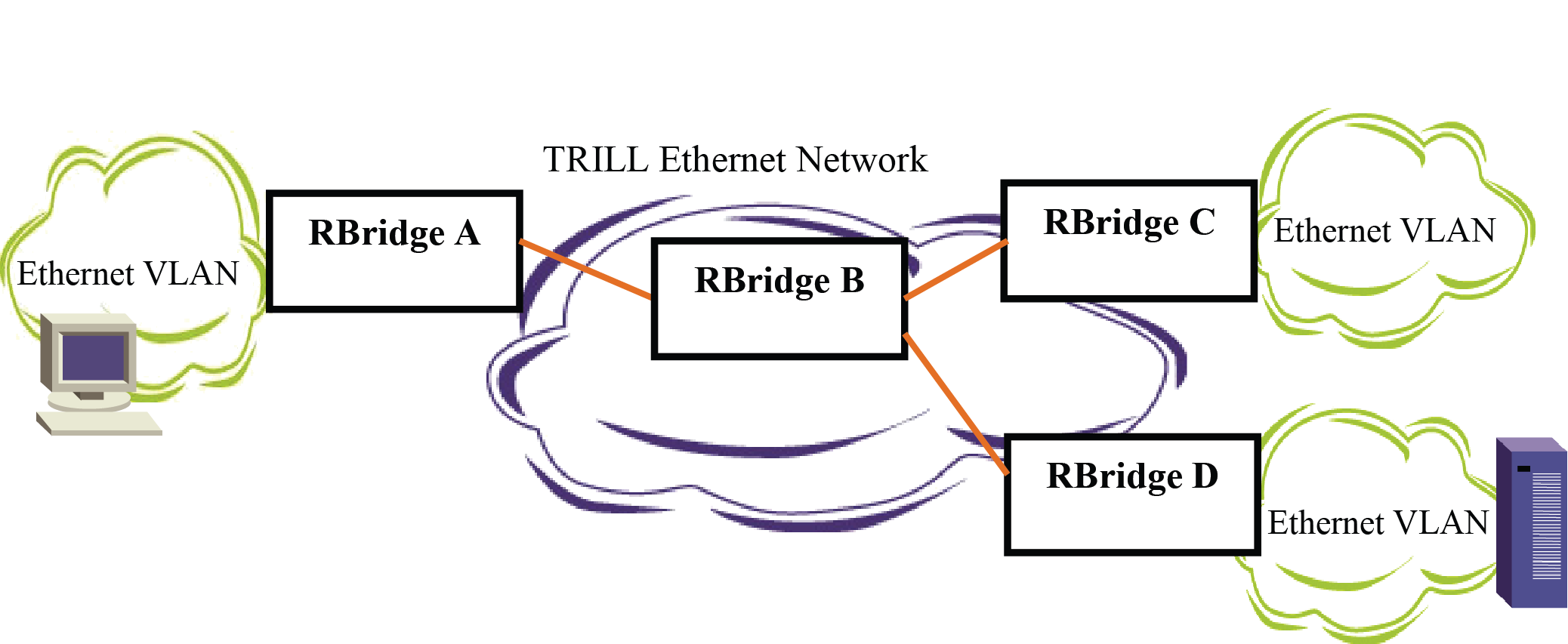
V = TRILL Protocol Version (2-bits)
R = Reserved (2 bits)
M = Multi-destination (1 bit)
Op-Length = Options length (5 bits)
Hop Count = TRILL RBridges Traversed (6 bits)
RBridge Nickname = Network Unique RBridge ID (16 bits)
Unlike SPB, the outer MAC addresses representing RBridges along with the TRILL header is rebuilt with each hop along the TRILL data path to the egress RBridge. The next hop RBridge is determined by executing a lookup of the Egress RBridge Nickname in the TRILL packet header. The forwarding process also differs from MPLS, since LSP forwarding labels (which have only local router significance) are replaced by RBridge nicknames that have network wide significance. Even though the TRILL data plane differs from both SPB and MPLS, this does not preclude TRILL data packets from being encapsulated and transmitted over an SPB or MPLS network or vice versa.
Let‘s take a quick look at how an Ethernet VLAN tagged packet would be transported across the TRILL reference network shown in the following figure. First, let‘s look at a packet transmit for a known unicast destination.


 Print
this page
Print
this page Email this topic
Email this topic Feedback
Feedback